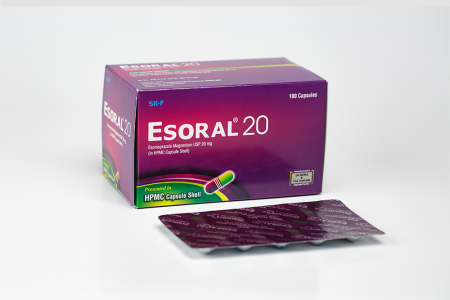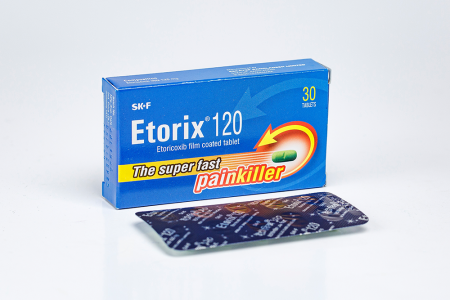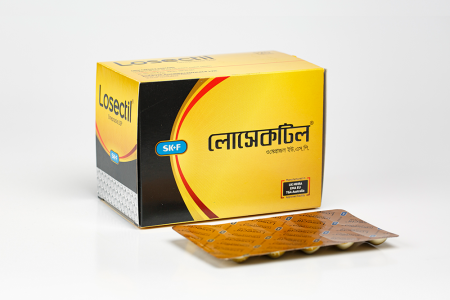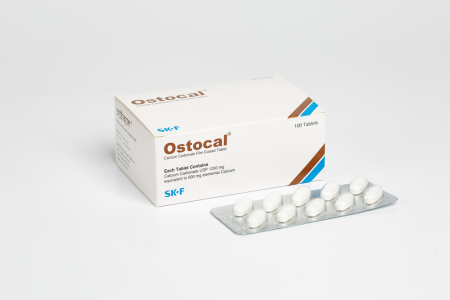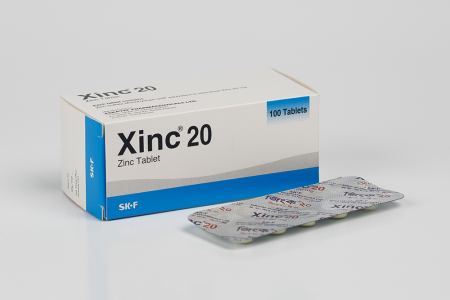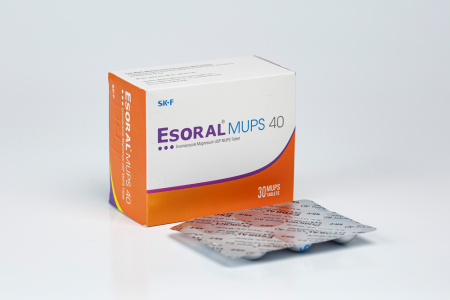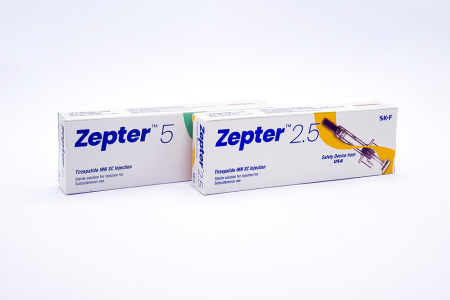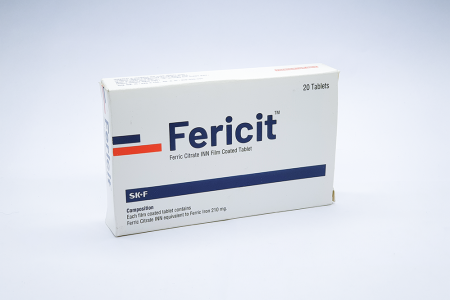
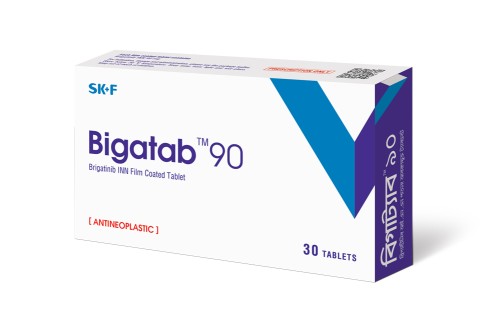
Indications
Bigatab is indicated for the treatment of patients with anaplastic lymphoma kinase (ALK)-positive metastatic Non-small cell lung cancer (NSCLC) who have progressed on or are intolerant to Crizotinib.
Pharmacology
Brigatinib is a tyrosine kinase inhibitor with in vitro activity at clinically achievable concentrations against multiple kinases including ALK, ROS1, insulin-like growth factor-1 receptor (IGF-1R), and FLT-3 as well as EGFR deletion and point mutations. Brigatinib inhibited autophosphorylation of ALK and ALK-mediated phosphorylation of the downstream signaling proteins STAT3, AKT, ERK1/2, and S6 in in-vitro and in vivo assays. Brigatinib also inhibited the in vitro proliferation of cell lines expressing EML4-ALK and NPM ALK fusion proteins and demonstrated dose-dependent inhibition of EML4-ALK-positive NSCLC xenograft growth in mice. Brigatinib exposure-response relationships and the time course of the pharmacodynamic response are unknown.
Absorption: Following administration of single oral doses of Brigatinib of 30 to 240 mg, the median time to peak concentration (Tmax) ranged from 1 to 4 hours.
Distribution: Brigatinib is 66% bound to human plasma proteins and the binding is not concentration-dependent in vitro. The blood to plasma concentration ratio is 0.69. Following oral administration of Brigatinib 180 mg once daily, the mean apparent volume of distribution (Vz/F) of Brigatinib at steady-state was 153 L.
Elimination: Following oral administration of Brigatinib 180 mg once daily, the mean apparent oral clearance (CL/F) of Brigatinib at steady-state is 12.7 L/h and the mean plasma elimination half-life is 25 hours.
Metabolism: Brigatinib is primarily metabolized by CYP2C8 and CYP3A4 in vitro. Following oral administration of a single 180 mg dose of radiolabeled Brigatinib to healthy subjects, N-demethylation and cysteine conjugation were the two major metabolic pathways. Unchanged Brigatinib (92%) and its primary metabolite, AP26123 (3.5%), were the major circulating radioactive components. The steady-state AUC of AP26123 was less than 10% of AUC of Brigatinib exposure in patients. The metabolite, AP26123, inhibited ALK with approximately 3-fold lower potency than Brigatinib in vitro.
Excretion: Following oral administration of a single 180 mg dose of radiolabeled Brigatinib to healthy subjects, 65% of the administered dose was recovered in feces and 25% of the administered dose was recovered in urine. Unchanged Brigatinib represented 41% and 86% of the total radioactivity in feces and urine, respectively.
Dosage & Administration
The recommended dosing regimen for Brigatinib is:
- 90 mg orally once daily for the first 7 days;
- If 90 mg is tolerated during the first 7 days, the dose should be increased to 180 mg orally once daily.
Brigatinib should be administered until disease progression or unacceptable toxicity. If Brigatinib is interrupted for 14 days or longer for reasons other than adverse reactions, treatment should be resumed at 90 mg once daily for 7 days before increasing to the previously tolerated dose. Brigatinib may be taken with or without food. Patients should be instructed to swallow tablets whole. Tablets should not be crushed or chewed. If a dose of Brigatinib is missed or vomiting occurs after taking a dose, an additional dose should not be administered and take the next dose of Brigatinib should be taken at the scheduled time.
Pediatric Use: The safety and efficacy of Brigatinib in pediatric patients have not been established.
Interaction
Drugs that may Increase Bigatab Plasma Concentrations: Strong CYP3A Inhibitors: Coadministration of Itraconazole, a strong CYP3A inhibitor, increased Bigatab plasma concentrations and may result in increased adverse reactions. Concomitant use of strong CYP3A inhibitors with Bigatab, including but not limited to certain Antivirals (e.g., Boceprevir, Cobicistat, Indinavir, Lopinavir, Nelfinavir, Ritonavir, Saquinavir), Macrolide antibiotics (e.g., Clarithromycin), Antifungals (e.g., Itraconazole, Ketoconazole, Posaconazole, Voriconazole), and Conivaptan should be avoided. Grapefruit or grapefruit juice should be avoided as it may also increase plasma concentrations of Bigatab. If concomitant use of a strong CYP3A inhibitor cannot be avoided, the dose of Bigatab should be reduced by approximately 50%.
Drugs that may Decrease Bigatab Plasma Concentrations: Strong CYP3A Inducers: Coadministration of Bigatab with Rifampin, a strong CYP3A inducer, decreased Bigatab plasma concentrations and may result in decreased efficacy. Concomitant use of strong CYP3A inducers with Bigatab should be avoided, including but not limited to Rifampin, Carbamazepine, Phenytoin, and St. John's Wort.
Drugs that may have their Plasma Concentrations altered by Bigatab: CYP3A Substrates: Bigatab induces CYP3A in vitro and may decrease concentrations of CYP3A substrates. Coadministration of ALUNBRIG with CYP3A substrates, including hormonal contraceptives, can result in decreased concentrations and loss of efficacy of CYP3A substrates.
Contraindications
It is contraindicated in patients with known hypersensitivity to Brigatinib or any other components of this product.
Side Effects
- Interstitial Lung Disease (ILD)/Pneumonitis
- Hypertension
- Bradycardia
- Visual Disturbance
- Creatine Phosphokinase (CPK) Elevation
- Pancreatic Enzyme Elevation
- Hyperglycemia
Pregnancy & Lactation
Pregnancy: There are no clinical data on the use of Brigatinib in pregnant women. If this drug is used during pregnancy, or if the patient becomes pregnant while taking this drug, advise the patient of the potential risk to a fetus.
Lactation: There are no data regarding the secretion of Brigatinib in human milk or its effects on the breastfed infant or milk production. Because of the potential for adverse reactions in breastfed infants, lactating women should be advised not to breastfeed during treatment with Brigatinib and for 1 week following the final dose.
Females Reproductive Potential: Females of reproductive potential should be advised to use effective non-hormonal contraception during treatment with Brigatinib and for at least 4 months after the final dose. Patients should be counseled to use a non-hormonal method of contraception since Brigatinib can render some hormonal contraceptives ineffective.
Males Reproductive Potential: Because of the potential for genotoxicity, males with female partners of reproductive potential should be advised to use effective contraception during treatment with Brigatinib and for at least 3 months after the final dose.
Infertility: Based on findings in male reproductive organs in animals, Brigatinib may cause reduced fertility in males.
Precautions & Warnings
Interstitial Lung Disease (ILD)/Pneumonitis: Severe, life-threatening, and fatal pulmonary adverse reactions consistent with interstitial lung disease (ILD)/pneumonitis have occurred with Bigatab. It should be withheld in any patient with new or worsening respiratory symptoms, and promptly evaluate for ILD/pneumonitis or other causes of respiratory symptoms (e.g., pulmonary embolism, tumor progression, and infectious pneumonia). Bigatab should be discontinued permanently for Grade 3 or 4 ILD/pneumonitis or recurrence of Grade 1 or 2 ILD/pneumonitis.
Hypertension: Hypertension was reported in 11% of patients in the 90 mg group who received Bigatab and 21% of patients in the 90-180 mg group. Grade 3 hypertension occurred in 5.9% of patients overall. Blood pressure should be controlled prior to treatment with Bigatab. Blood pressure should be monitored after 2 weeks and at least monthly thereafter during treatment with Bigatab. It should be withheld for Grade 3 hypertension despite optimal antihypertensive therapy. Permanent discontinuation of treatment should be considered with Bigatab for Grade 4 hypertension or recurrence of Grade 3 hypertension. Caution should be used when administering Bigatab in combination with antihypertensive agents that cause bradycardia.
Bradycardia: Bradycardia can occur with Bigatab. Heart rate and blood pressure should be monitored during treatment with Bigatab. Patients should be monitored more frequently if concomitant use of drug known to cause bradycardia cannot be avoided.
Visual Disturbance: Adverse reactions leading to visual disturbance including blurred vision, diplopia, and reduced visual acuity, were reported in 7.3% of patients receiving Bigatab in the 90 mg group and 10% of patients in the 90-180 mg group. Patients should be advised to report any visual symptoms. Bigatab should be withheld and obtained an ophthalmologic evaluation in patients with new or worsening visual symptoms of Grade 2 or greater severity. Upon recovery of Grade 2 or Grade 3 visual disturbances to Grade 1 severity or baseline, Bigatab should be resumed at a reduced dose. Treatment with Bigatab should be permanently discontinued for Grade 4 visual disturbances.
Creatine Phosphokinase (CPK) Elevation: Creatine phosphokinase (CPK) elevation occurred in 27% of patients receiving Bigatab in the 90 mg group and 48% of patients in the 90 mg-180 mg group. Patients should be advised to report any unexplained muscle pain, tenderness, or weakness. CPK levels should be monitored during Bigatab treatment. Bigatab should be withheld for Grade 3 or 4 CPK elevation.
Pancreatic Enzyme Elevation: Amylase elevation occurred in 27% of patients in the 90 mg group and 39% of patients in the 90→180 mg group. Lipase elevations occurred in 21% of patients in the 90 mg group and 45% of patients in the 90→180 mg group. Lipase and amylase should be monitored during treatment with Bigatab. Bigatab should be withheld for Grade 3 or 4 pancreatic enzyme elevation.
Hyperglycemia: 43% of patients who received Bigatab experienced new or worsening hyperglycemia. Grade 3 hyperglycemia, based on laboratory assessment of serum fasting glucose levels, occurred in 3.7% of patients. Two of 20 (10%) patients with diabetes Bigatab or glucose intolerance at baseline required initiation of insulin while receiving Bigatab. Fasting serum glucose should be assessed prior to initiation of Bigatab and monitored periodically thereafter. Antihyperglycemic medications should be initiated or optimized as needed. If adequate hyperglycemic control cannot be achieved with optimal medical management, Bigatab should be withheld until adequate hyperglycemic control is achieved and considered reducing the dose of Bigatab.
Storage Conditions
Keep below 30°C temperature, away from light & moisture. Keep out of the reach of children.



